

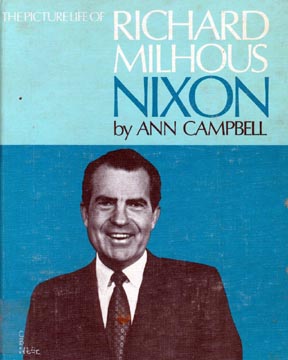

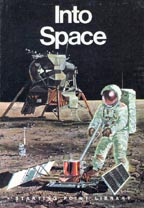
 |
 |
 |
 |
 |
Old children's books attract me because they preserve the feel of a certain moment in time. I've put two types of books into the category Glimpses of History. Some address a topic that was current at the time and that only in retrospect we view as history. Others are history books themselves but history books that reveal something important about the time in which they were written.
A simple example of the later category is a book like Doers and Dreamers: Social Reformers of the Nineteenth Century, a straightforward work that probably provided facts for many a report during its days at a local library. It could have been written at any time during the past thirty or forty years, but its opening sentences stamp it as a product of the Vietnam years: "Today is a time of social unrest. Protest marches, reform movements, and riots make newspaper headlines almost daily."
A similar, much older example is History of the United States in Rhyme, which ends on a note of turn-of-the-century optimism: "So, in proud peace with all the world/We greet the rising dawn/That ushers in for good or ill/The Twentieth Century's Morn./But if Columbia's boys and girls/True patriots strive to be,/Then only good shall bless the land/Where every man is free."
I have two books written just after the end of World War II that resound with the importance of peace and tolerance. Our Country's Story (copyright 1945, 1948 printing) is a history book that ends with a chapter on the war effort and the assertion that "there must never be another war again," and a plea for young people to get along with those of other cultures: "American boys and girls know they will always love America best, just as they love their own families best. But they want to be friends with all the other people in the world. They know that everybody, everywhere, will be happier when people learn to live in peace and friendship."
After summarizing holidays and special occasions from New Year's Day to Christmas, 1945's Heydays and Holidays ends with an unusual note about a specific celebration: "The drawings for this were finished on August 14th, 1945, the day the war with Japan ended. That night the people in Gorham, New Hampshire, built a huge bonfire in the village common to celebrate the end of the war." (This book also seems to reflect its moment of post-War tolerance by giving ample attention to Jewish holidays.)
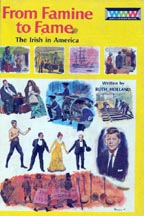 |
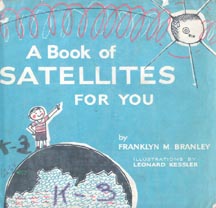 |
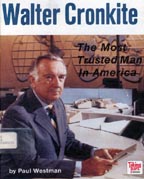 |
Because biographies for children often seek to provide role models, the moment in history when a biography appears undoubtedly influences the subject chosen. Walter Reed: Doctor in Uniform, 1943, presented a military hero from a bygone era to children living in a world at war, while 1977's The Value of Truth and Trust: The Story of Cochise reflected a growing awareness of the contributions of and inequities inflicted upon Native Americans.
Other biographies fall into the first category I mentioned: They dealt with people who were in the public consciousness at the time, and only now seem like historic, sometimes ironic, relics. Take for instance the cheerful, pre-Watergate Picture Life of Richard Nixon which ends with his inauguration speech: "His quiet words gave hope to a troubled world," the author concludes.
Similarly, just in the wake of John F. Kennedy's assassination came a tribute that is poignant in the freshness of the pain it expresses: "He said follow me to the end of the road. And we will seek out greatness. He was struck down long before we could see what lay at the end of his road. But for a moment we caught his step. And when he turned, we smiled."
An issue of Children's Play Mate Magazine from July 1944 reveals some of the ways children experienced World War II. Along with the usual stories, poems, games and crafts, the magazine includes a column about clubs. Children wrote in about clubs they formed to raise money for war bonds and to help with scrap drives and other activities. The clubs had patriotic names and mottoes, and red, white and blue were by far the most popular club colors. The magazine also encouraged children to join its Playmate Patrol for Defense. One young member wrote: "My cousin...was killed last month, and it made me feel very sad, as he grew up with us and was just like my brother. But I understand that we have to be brave and go on helping the many boys who die fighting so that girls like me can live and be good citizens in the grandest country in the world."
Another girl wrote a poem for her father: "My father is in the service/For a very special purpose/He is bringing victory near/So that we'll be free from fear/He is very brave and strong/He will help to right the wrong/And when my father's by my side/My heart overflows with love and pride."
Some books introduced kids to a brand new topic. A Book of Satellites for You may not seem too exciting a prospect today, but just a year after Sputnik launched it surely held a fascination. A book about supermarkets might not excite today's kids either, but in the early 1950s The First Book of Supermarkets introduced suburbia's children to this institution that would play an important role in their lives.
Outer space is of perpetual interest to children, but in the year of the moon walk Into Space took an unusually detailed look at that memorable mission.
The mood of growing ethnic pride shows up in books like America is Also Italian and From Famine to Fame: The Irish in America. These books trace the hardships that immigrants faced and the triumph the eventually experienced. For the Irish, "fame" took the form of JFK, so this book closes on a bittersweet note: "His energy, his intelligence and his courage helped the American people to overcome their prejudice. A door had been opened, one that is not likely to shut again. Now it is up to other young Americans who will write future chapters of our history to see that the door remains open--and, in time, opens wider and wider still."
Back to the Children's Bookshelf
Back to my Homepage
